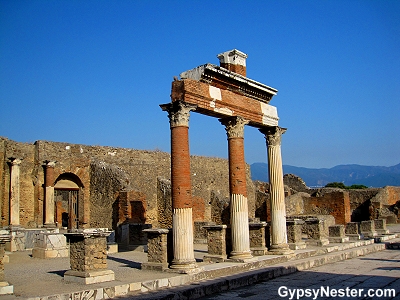
Rome may not have been built in a day, but Pompeii was certainly destroyed in one.
Because of the unique nature of the calamity that buried the city, we have an incredibly well preserved peek into every day life two thousand years ago in The Roman Empire.
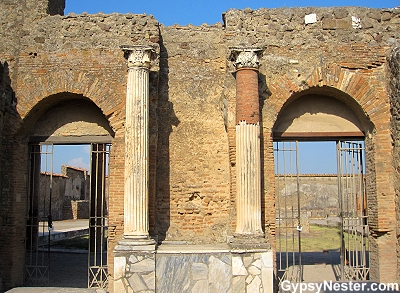
On our journey across The Mediterranean aboard The Royal Princess we would encounter a number of prominent historic sites, but this was without a doubt the most dramatic.
When Mount Vesuvius violently erupted in 79 AD the 20,000 citizens of Pompeii were essentially frozen in time, sealed under seventy five feet of volcanic ash and rock known as tephra.
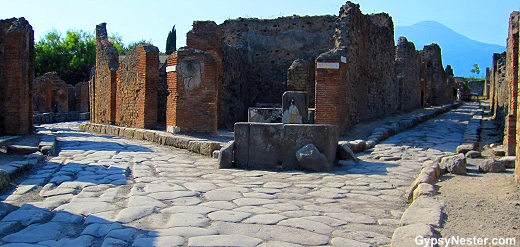
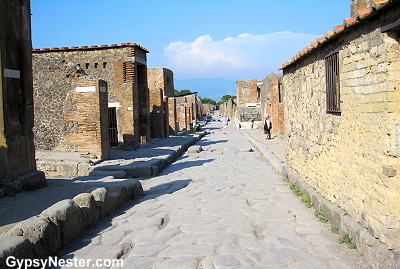
One of the first things we learned at the site was that the material did not fall from the sky like snow, that would have allowed time for escape.
Instead the volcano created a pyroclastic flow, an avalanche of super heated gas carrying the tephra down the mountain at hundreds of miles per hour and instantly covering everything in its path.
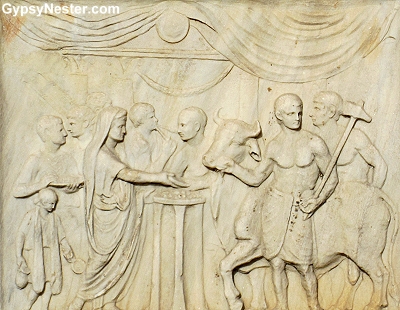
For fifteen hundred years the city remained under this blanket of stone, long forgotten until a wall was accidentally uncovered in 1599.
It would be another one hundred and fifty years before serious excavations took place.
Now about two-thirds of the city has been excavated, but most attention is being directed at preserving the currently exposed ruins.
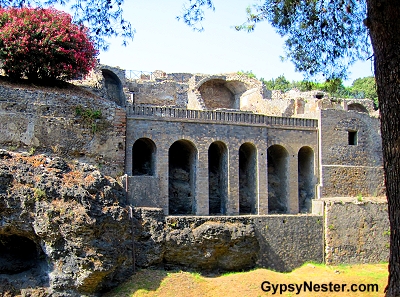
While we made our way to the gate we were blown away by the outer wall, and frantically snapped pictures while trying to keep up with our group.
We didn’t want to miss any of the information our guide was giving, but could barely believe what we were seeing.
Passing into the city through the Porta di Nocera we found ourselves in The Grand Palestra, a large open area surrounded by columns that is thought to have been a training area for athletes. There was even a huge swimming pool in the center.

Some of the training was likely in preparation for the gladiator’s performances in the adjacent amphitheater.
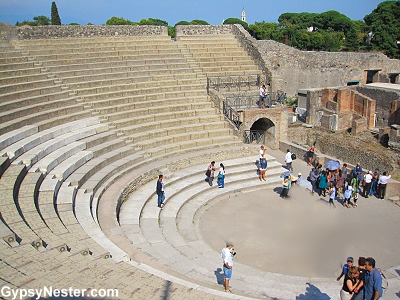
Entering the amphitheater we were stunned by the condition, it is in great shape.
In fact it is still fully functional, so much so that Pink Floyd recorded their Live at Pompeii concert film in it. Pretty remarkable for the oldest Roman theater known to exist.
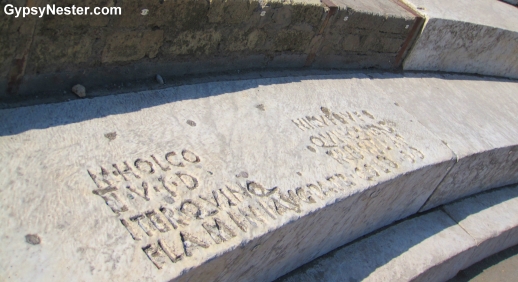
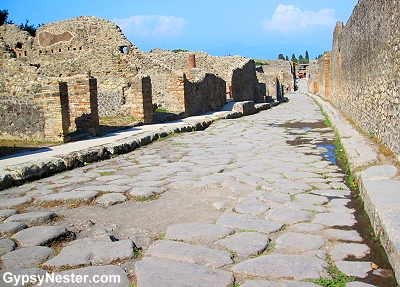
Leaving the theater we meandered through narrow side streets that almost looked as if they could be in the old quarters of any modern Italian city.
While we walked, we poked our heads into several homes and shops before arriving at the Lupanar.
Lupanar is a common Latin term for brothel, and this was easy for the excavators to identify by the suggestive sex scenes painted on the walls.
Speculation is that the erotic paintings may have served as a menu of sorts. If that weren’t enough for a positive ID, rather lurid graffiti was also found left by both the customers and the workers.

Working our way toward The Forum, we learned about a couple ingenious features built into the roads.
Roads doubled as sewers, so sidewalks were made much higher than modern ones, and periodically large stones were placed in the middle of streets to use as crosswalks.
They served the dual purpose of allowing pedestrians to avoid walking in the disgusting mess and slowing cart traffic by forcing them to navigate their wheels between the rocks.
In some places we could even see ruts in the cobblestones left by the ancient chariots.
Pompeii, like any Roman city, was built around The Forum, which became the center for the rest of our tour.
Temples, government buildings, businesses, and baths surround the stadium-sized open area where citizens gathered in the shadow of their ultimate demise, Mount Vesuvius.
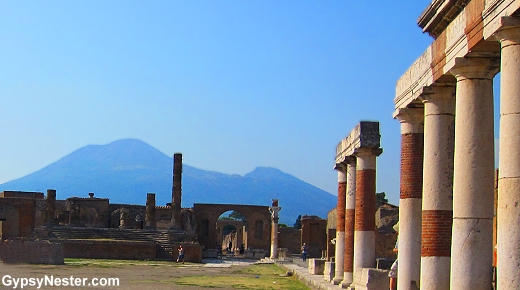
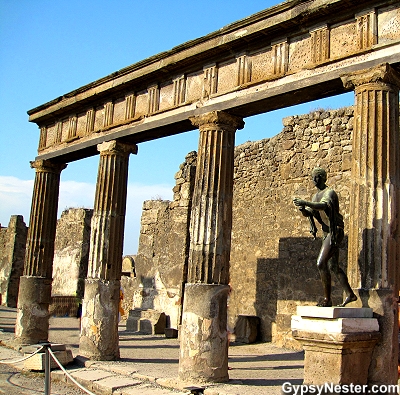
The Temple of Apollo, in the center of The Forum, was perhaps the most important religious shrine to the people of Pompeii, as The Cult of Apollo had been popular for centuries after spreading throughout the religion from Greece.
Unlike most other Greek gods, the Romans didn’t have an equivalent to Apollo so there are temples all across the former empire in his honor.
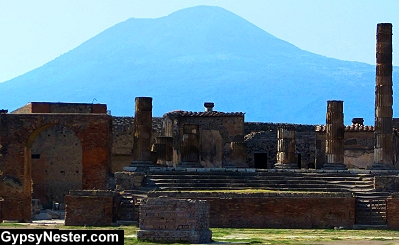
However, as the ruler of the gods, Jupiter’s temple held the prime real estate of The Forum, overlooking the entire plaza.
It is not nearly as well preserved as many of the other buildings, but just behind it may be the most intact of all the ruins, The Forum Baths.
These are one of three public baths and survived the eruption remarkably well.
Unlike most all of the other buildings, the roof of the baths remained in place so the inside was relatively unharmed.
The ornate decorations and many of the frescos survived, so we got a fairly good feel for what it would have been like to take a soak back in the first century BC. Talk about a hot tub time machine!
Click in and see our photo gallery of the Forum Baths!
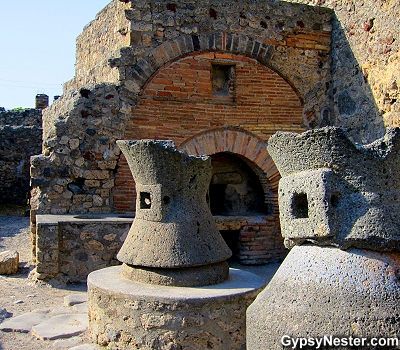
In the neighborhood around the baths we got our best glimpse at regular life in a Roman city.
On one corner we found a bakery with large grinding stones in the yard and a brick oven that still looked as though a loaf of bread, or even a wood-fired pizza, could pop out any moment.
Curious, we tried to see if the millstones would move and to our surprise they turned with ease.
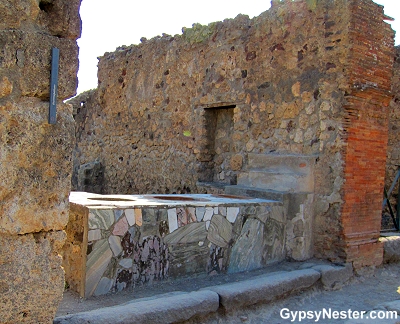
Across the street is one of the several bars or cafes that served the city. The counter is decorated with inlaid stone and even has holes on top for the pots of wine and food.
It was easy to imagine the customers lining up to grab a bite at lunch or on their way home. Some things never change.

One of Pompeii’s most famous homes is also nearby, the House of the Tragic Poet.
On the floor of the entryway we could still read the mosaic showing a chained dog with the words Cave Canem written below it.
Even two thousand years ago home owners were warning would-be burglars to Beware of the Dog.

Our last stop before going back outside the walls was the Forum Granary. Originally a storage facility and market for grain, it now houses a treasure of artifacts along with the disturbing, yet mesmerizing plaster casts of a few of the casualties.
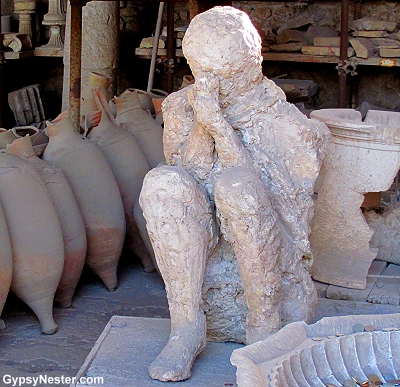
The long, open building has been filled with shelves to hold a large number of clay storage pots, statues, stonework, and other items recovered during the excavation.
While these are all interesting and of great historical value, most everybody’s attention was focused on the human figures.
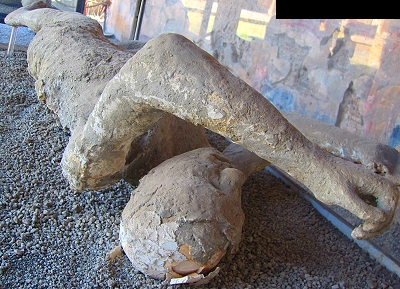
After taking over the excavations in 1863, Giuseppe Fiorelli realized that the open pockets of air he was periodically encountering were actually spaces left by bodies.
The extreme heat of the pyroclastic flow killed the victims and time did the rest, leaving what turned out to be molds that captured the moment of death.
It was his idea to fill the spaces with plaster, then carefully remove the surrounding volcanic material.
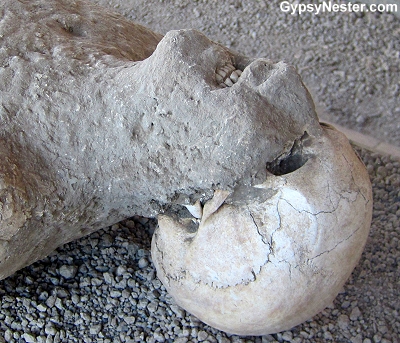
Viewing these stark statues brought a hush over everyone present.
It is difficult to describe our reactions, but it was a somber, moving experience to witness the anguish immortalized by the body positions, and on the featureless, yet expressive faces of these ancient sufferers.
We left the city quietly, with an amazing amount of history and emotion to absorb, but positive that this had been one of the most incredible days of our lives.
David & Veronica, GypsyNester.com
Thanks to Princess Cruises for inviting us along and providing this adventure! As always, all opinions are our own. See our entire Mediterranean voyage aboard the Royal Princess here


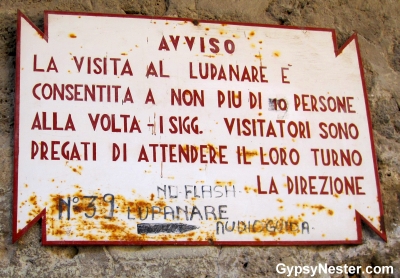
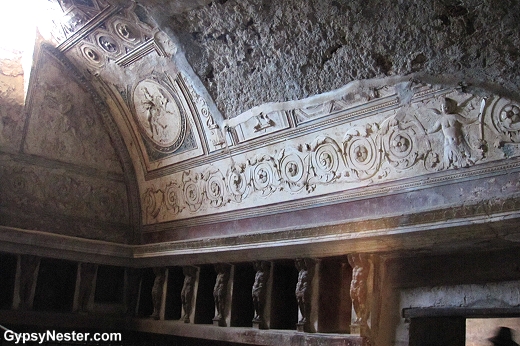
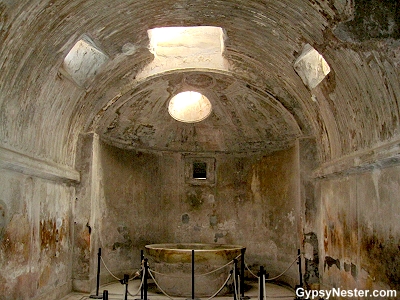

Your website has outstanding material. I bookmarked the website
Those buildings must have been gorgeous inside, judging from the ceiling remnant from the public bath. What an incredible walk through history!
Excellent post! I’ll be visiting Pompeii this July. How many hours did you spend in the ruins, and was it enough time or did you feel that you wanted more? We’re trying to figure out whether we can do the ruins in the morning and Vesuvius in the afternoon of the same day, or if we will need more time. Thanks!
Hey Katrina! We spent half a day there and I would suggest a full day. It is a huge site and I would have loved to be able to spend time after our guided tour of the highlights to explore on my own. I find that walking around and letting my imagination run wild is one of my favorite ways to connect to a place. If you are like me, plan a full day. -Veronica
I was not prepared for how huge Pompeii is!
Very true, and there is more yet to be uncovered.
Pompeii is such a great place. I have fond memories from there. I can hardly wait for the movie next year. I am sure it will be great… and maybe bring even more tourists to this wonderful place.
Looking forward to the movie too.
What a way to go, becoming immortalized in a stance of fear.
Yes, what a way to be captured for eternity.
It looks like you could just move in. Wonderful photos!
It was truly an amazing peek into first century life in the Roman Empire.
Would love to visit one day – I have seen other photos of the brothel and all I can say is I hope they had a few pillows available because it could not have been very comfy. The street and sidewalk system is ingenious!
The beds do look a tad hard. Yes, good thinking on the crosswalks.
Pompeii is working its way to the top of my bucket list. Your photos are very evocative.(I skipped the X rated ones- what with the NBA and all). Would you have wanted another day in the area?
Uh, not the NBA. I’m not worried about the NBA. I meant the NSA.
That does make better sense. We definitely would have liked to have more time.